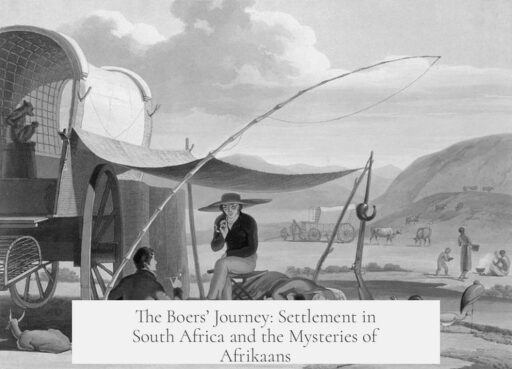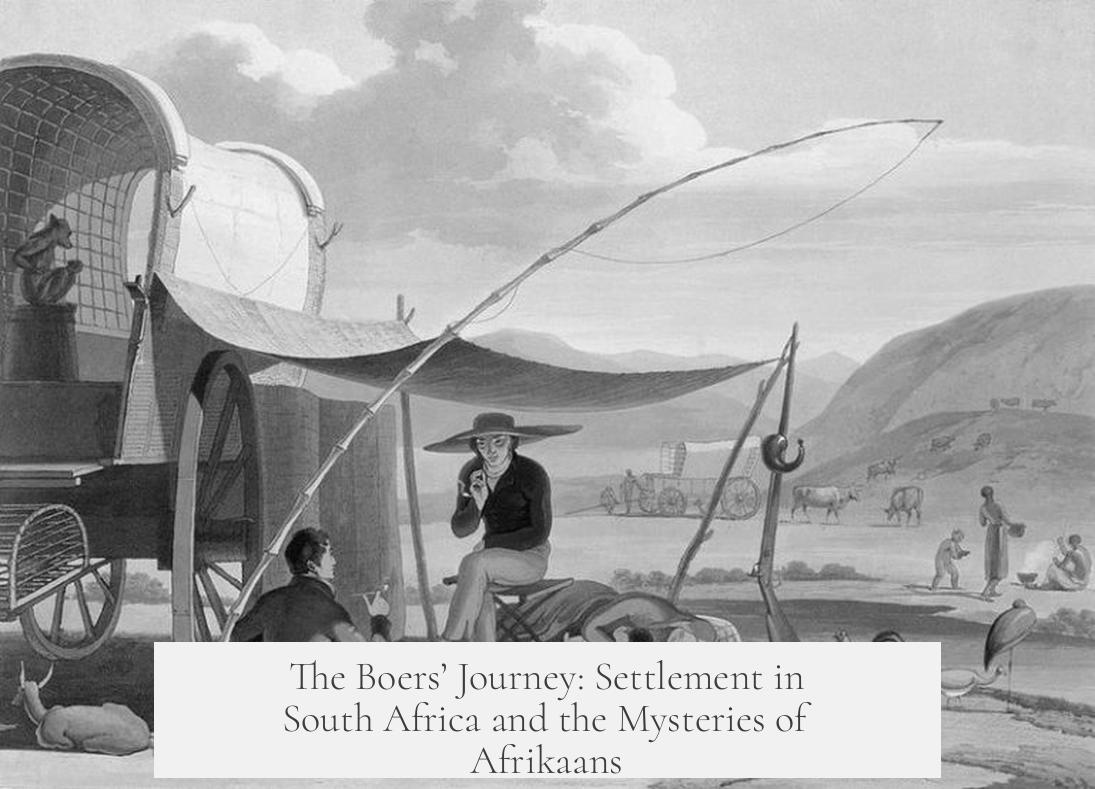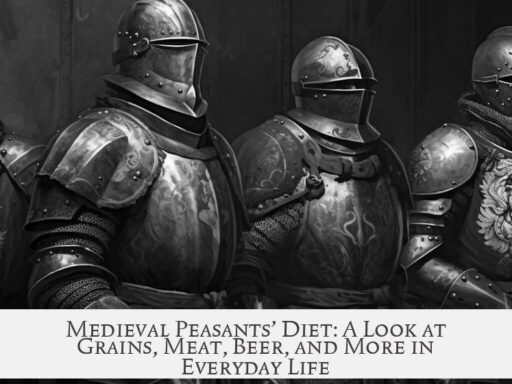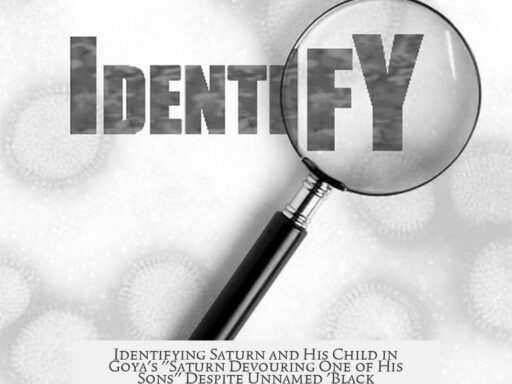The Boers chose to settle in South Africa primarily because the Dutch East India Company (VOC) established a refreshment station at the Cape of Good Hope as a strategic stopover for ships traveling to and from the Netherlands and the Dutch East Indies. This location offered a temperate climate, friendly indigenous Khoikhoi people for trade, and a vital resupply point on long maritime routes before the Suez Canal was built.
The VOC founded the Cape Colony in 1652. Initially, it was not intended to be a permanent settlement but a supply station for Dutch ships. Over time, the VOC saw the advantages of having a more stable presence there. This led to sending families, including women and orphans, from the Netherlands to help develop the colony into a permanent settlement. A diverse European population settled there, including Dutch, French Huguenots, Germans, and Danes.
At the Cape, the colonists interacted with the indigenous Khoikhoi. Early interracial relationships began, contributing to the formation of the “Coloured” community in South Africa. By the 17th and 18th centuries, Dutch colonists slowly expanded inland beyond the initial area of Cape Town.
The Boers, a subgroup of the Afrikaners, specifically refer to those Afrikaners who undertook the Great Trek in the early 19th century. This migration was a reaction to British control of the Cape Colony after the Napoleonic Wars and especially after the Second Boer War. The Boers moved northwards seeking autonomy and new land. They saw themselves as a “chosen people,” motivated by religious beliefs and cultural identity to forge independent republics such as the Orange Free State and the South African Republic (Transvaal).
| Key Reasons for Boer Settlement in South Africa | Details |
|---|---|
| Strategic Location | Refreshment station for Dutch ships en route to Asia, offering a temperate climate. |
| VOC Initiative | Dutch East India Company established Cape Colony to support maritime trade and military needs. |
| Permanent Colonization | VOC sent settlers, women, and orphans to stabilize and grow the population. |
| Interracial Contact | Relations with Khoikhoi influenced demographics; emergence of a mixed community. |
| Great Trek | Boers moved inland to escape British rule and create independent states. |
The term “Boers” refers exclusively to those Afrikaners who migrated during the Great Trek, while “Afrikaners” refers to the broader ethnic group descended from several European settlers, with Dutch, French Huguenot, German, and Danish roots. Afrikaners generally speak Afrikaans, a language that evolved from Dutch but incorporated influences from German, French, Malay, Portuguese, and indigenous languages.
Afrikaans emerged through a unique linguistic process. Early settlers and indigenous people communicated through a pidginized form of Dutch, which the children of these groups then creolized. Over centuries, this simplified language merged with the Dutch used by white settlers, yielding Afrikaans. This language shows creole-like features such as simplified grammar and distinct word formations. Despite heavy Dutch origins, Afrikaans is now a separate language rather than a mere dialect of Dutch.
Language scholars note that Afrikaans was historically known as “kombuis hollands” or “kitchen Dutch” among lower social classes, reflecting its creolized status and the social mixing between European settlers and indigenous or mixed populations. There is significant mutual intelligibility between Afrikaans and Dutch.
Afrikaans gained official status alongside English in South Africa, especially under apartheid, where it was a required language in schools. This policy led to widespread bilingualism. However, after 1994, the South African government recognized many indigenous languages formally, reducing the exclusive status of Afrikaans and English in education.
The use of Afrikaans varies regionally. Some provinces remain predominantly Afrikaans-speaking, and distinct dialects like Kaapse Afrikaans exist. Many South Africans today speak Afrikaans as a primary or secondary language alongside other native tongues.
- Boers settled in South Africa mainly due to the VOC’s establishment of a strategic refreshment station at the Cape.
- The Boers are a subset of Afrikaners who left to establish independent states during the Great Trek.
- The Afrikaner ethnic group has mixed European origins beyond just Dutch heritage.
- Afrikaans developed from Dutch but is influenced by multiple European and local languages, resulting in a creole-like language.
- Afrikaans was historically associated with lower-class speech but gained official language status in South Africa until 1994.
Why Did the Boers Choose to Settle in South Africa? Plus, Some Afrikaans Mysteries Unveiled
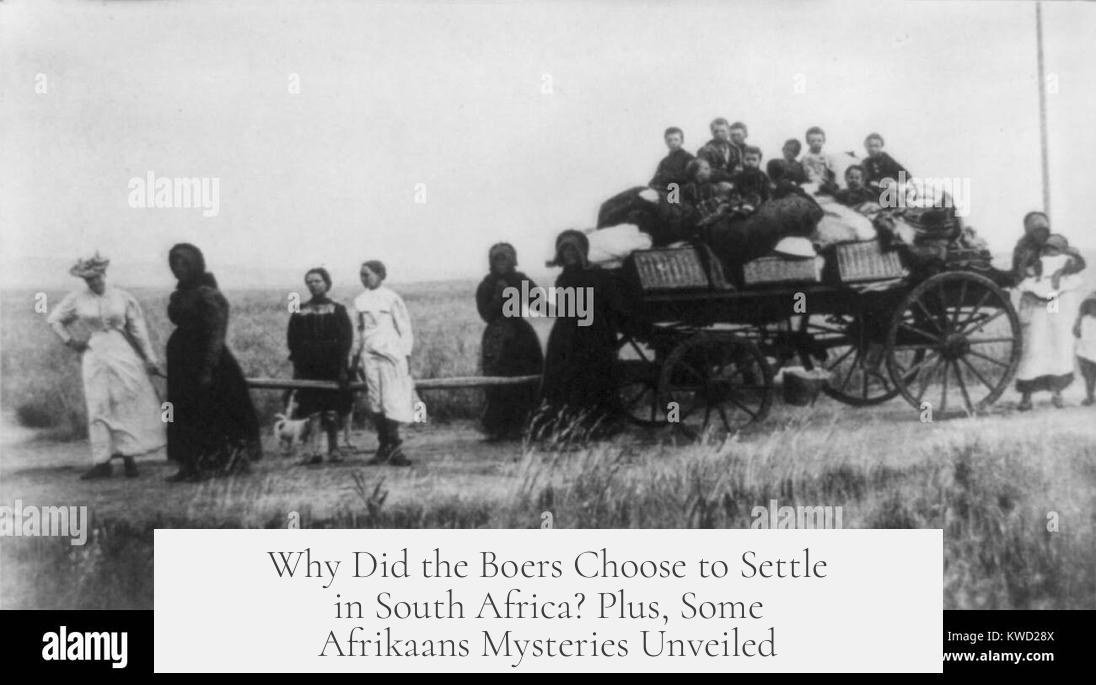
Why did the Boers, a Dutch ethnic group, settle in South Africa? Well, actually, the story is a bit more tangled than a simple Dutch migration tale. The Boers aren’t just “a Dutch ethnic group.” They’re a subset of Afrikaners—a group whose roots stretch beyond the Netherlands, and who forged an identity in South Africa through migration, mingling, and a quest for their own land. So buckle up, because this isn’t your typical colony story, and the Afrikaans language has some juicy secrets of its own.
Boers, Afrikaners, and a Mix of European Influences
Let’s start by clearing a common misconception: Boers aren’t purely Dutch. In fact, the Afrikaners—who are the broader ethnic group that includes Boers—have a melting pot ancestry. Besides Dutch and Frisian origins, they’ve got French Huguenot, German, Danish, and other Protestant European bloodlines woven into their heritage.
Boers are specifically those Afrikaners who moved away from the Cape Colony during the early 19th century. These pioneers set out to claim their own territories far from British control. Not every Afrikaner is a Boer, and not every Boer stayed put—so identity in the Cape has always been a bit of a clan affair.
The Cape Colony: A Strategic Pit Stop, Not a Home Base—At First
The Cape Colony started as a Dutch East India Company (VOC) refreshment station. Picture it: Ships sailing from the Netherlands to far-off Indonesia needed a place to rest and resupply before continuing the grueling journey around Africa’s southern tip. Cape Town was perfect for this.
The VOC wasn’t thinking “let’s build a permanent colony” initially. It was first and foremost a company town with a very specific purpose. Notably, the British seized the colony later, mainly to prevent French control—showing its global strategic importance.
Who Settled First? A Diverse European Crowd
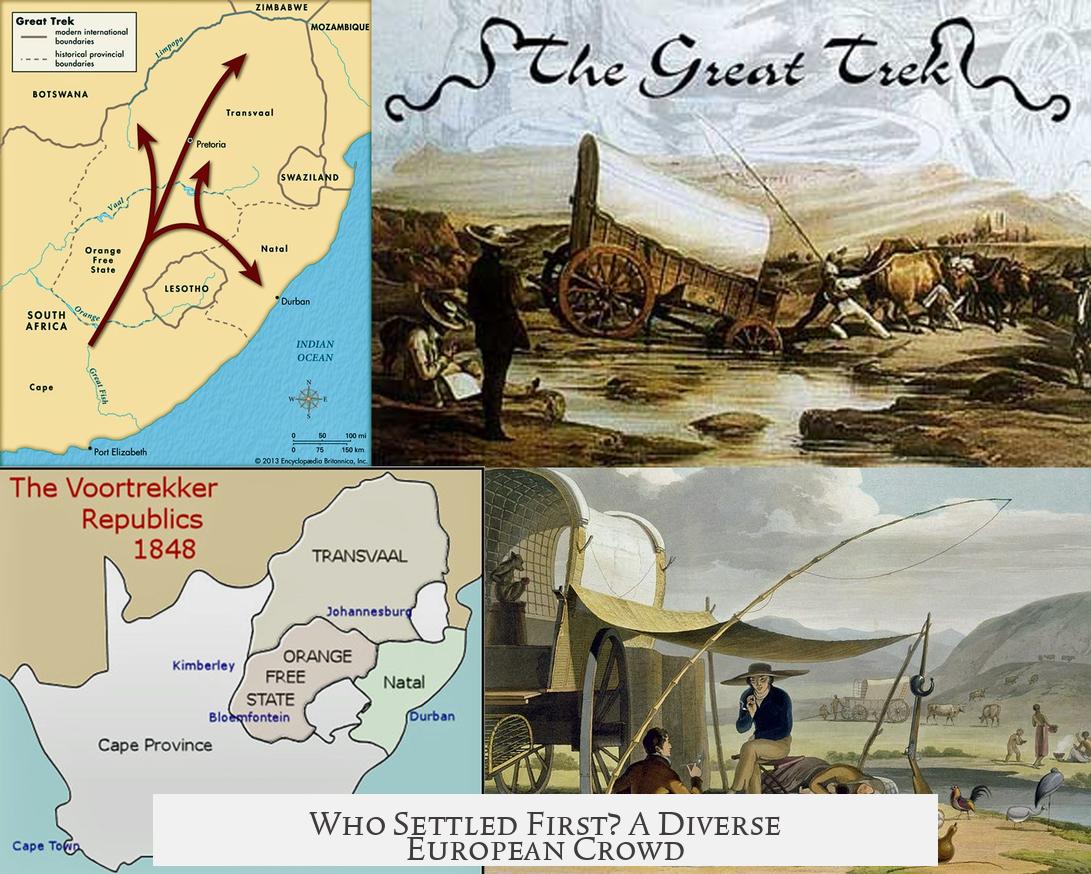
Contrary to popular thought, early settlers in the Cape Colony were not just Dutch. Germans actually outnumbered the Dutch settlers for a while. The population began to stabilize with more women and children arriving from Europe, including many French Huguenots seeking refuge from persecution.
The settlers also mixed with indigenous Khoikhoi women. This is crucial: from the start, there was intermingling, which seeded the multiracial “Colored” community in South Africa. The Cape Colony wasn’t an isolated Dutch bubble—it was a cultural blender.
From a Shipwreck to Settlements: How VOC Chose to Stay
Here’s a neat bit of history: In 1647, a Dutch ship wrecked near the Cape, stranding its crew for almost a year. They reported positively on the people they met, the pleasant climate (which reminded them of home), and the location’s promise. This report prompted the VOC to establish a formal refreshment station in 1652.
This tiny foothold grew steadily, with more settlers arriving and fanning out into the inland regions. The VOC may have come for ships, but the land invited settlers.
Enter the Great Trek: Boers Seeking ‘Promised Land’
Fast forward to the 19th century. When the British Empire gained control, tensions grew. The British imposed laws and practices that irked the Boers. These Afrikaners—self-perceived as God’s chosen people—decided to go on a major road trip called “Die Groot Trek”, or the Great Trek.
The Boers sought independence, a place where they could live by their own values and language, free from British rule. This movement was part cultural, part political, and all about carving out their own identity in South Africa’s vast hinterland.
Now, What’s Up With Afrikaans?
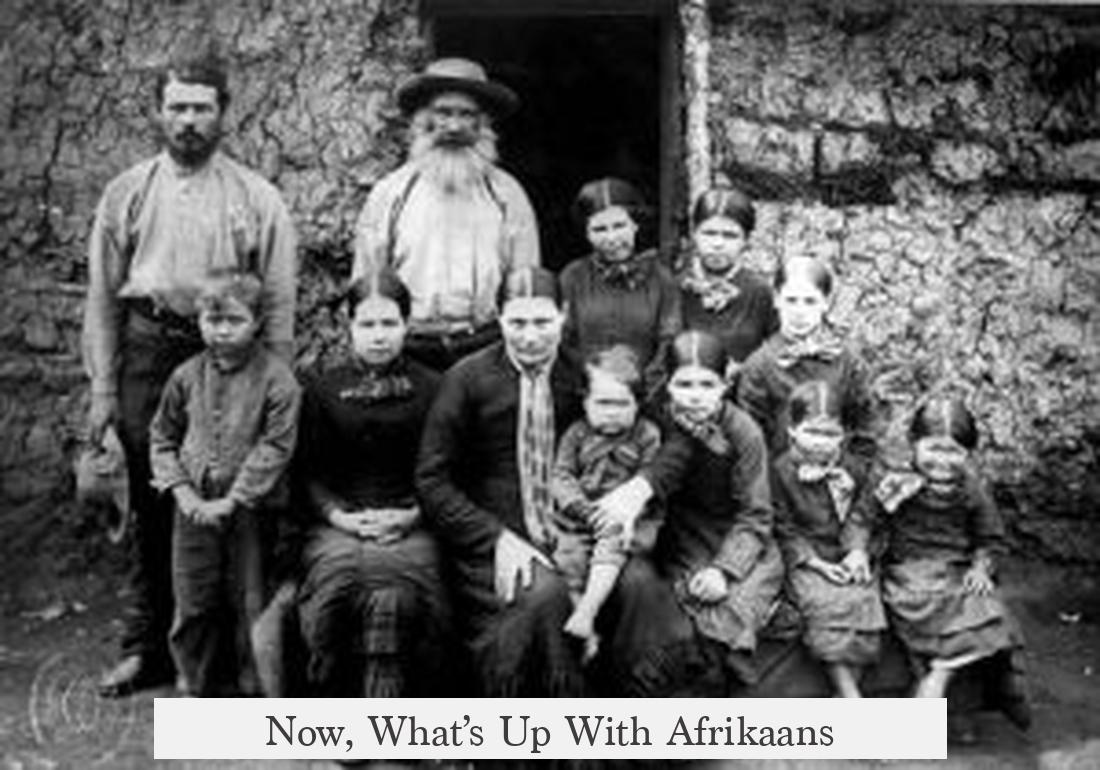
Afrikaans is often mistakenly seen as just a Dutch dialect. But it’s far more than that—it’s a fascinating outcome of South Africa’s complex cultural tapestry.
Afrikaans evolved alongside the Afrikaner identity. It started as Dutch but absorbed French and German influences early on. More strikingly, it picked up aspects from the Khoi languages and other African tongues, largely because Khoi women learned a pidgin of Middle Dutch and passed it on.
Imagine that—children growing up speaking a creolized language that blended European languages with local African elements. Afrikaans bears the marks of this history. It dramatically simplified Dutch morphology and mixed in vocabulary from Portuguese, English, Malay, and more.
Its nickname? Kombuis Hollands or “kitchen Dutch,” a nod to its origins among lower classes and marginalized communities. The language reflects a convergence—what linguists call “creoloid status”—between white South African Dutch and the creoles spoken by the Coloured community.
The Controversy and Truths Behind Afrikaans
Afrikaans’ origins spark debates. Afrikaners historically resisted acknowledging the language’s mixed roots, especially the influence of African and mixed-race groups. Genetically speaking, research shows that all Afrikaners carry around 6–7% Coloured ancestry.
Isn’t that a reality check? Language and lineage reveal a history of blending, despite racial divides promoted later in South Africa’s history.
Where Afrikaans Stands Today
Until 1994, Afrikaans and English were South Africa’s only official languages. Schools required both, making Afrikaans widespread among many ethnic groups: white Afrikaners, Coloured communities, and some indigenous speakers.
Today, South Africa boasts 11 official languages after 1994, allowing a richer representation of indigenous tongues. Afrikaans remains a major language, especially in certain provinces. Regional variants, like Kaapse Afrikaans, highlight its vibrant evolution.
So, What’s This All Mean for the Boers and Afrikaans?
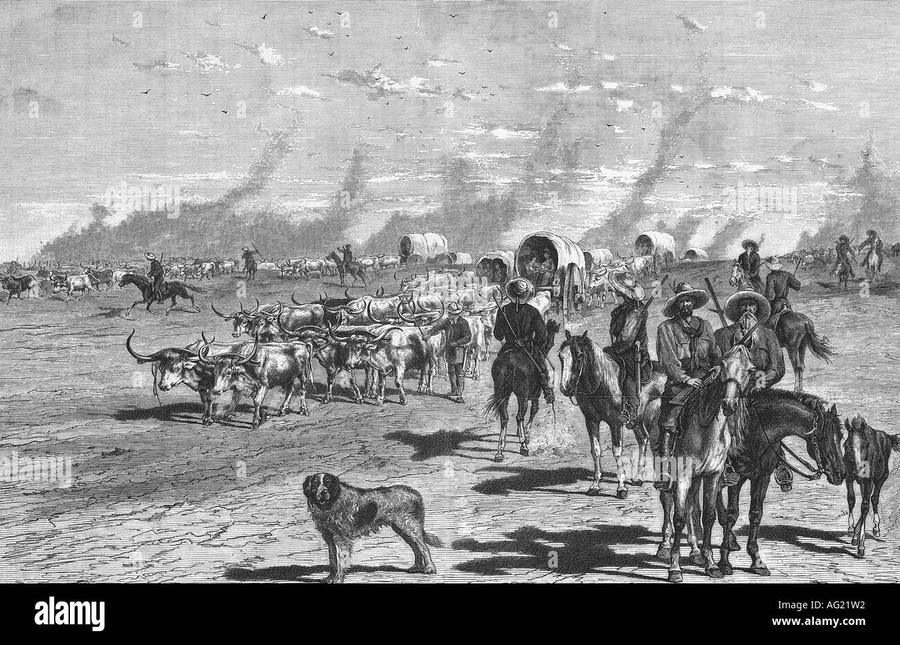
- The Boers settled in South Africa initially because European powers sought a strategic port for trade routes. They later carved out independent states to escape British dominance.
- Their identity is tied to a mix of European and African roots, evident in their language and bloodlines.
- Afrikaans isn’t just a version of Dutch—it’s a reflection of centuries of cultural interaction, social layering, and resilience.
- The language and people who speak it carry a past many might overlook, involving colonists, indigenous people, and freed slaves.
Curious About the Boers and Afrikaans?
Ever wondered how language and identity intertwine in complex societies? The Boers’ story shows how migration, politics, and culture collide to create new identities. Afrikaans stands as a testament to that collage.
Want to dive deeper? Check out “History of Southern Africa” by JD Omer-Cooper. For a linguistic angle, Larry McElhiney’s essay (link here) offers insights on Afrikaans’ creole roots.
One thing is clear: The Boers didn’t just choose South Africa because it was ‘there.’ They were shaped by histories bigger than Europe, influenced by indigenous peoples, and driven by a fierce desire to build a life on their own terms.
And Afrikaans? It’s more than words. It’s a living symbol of a complex, shared past.
